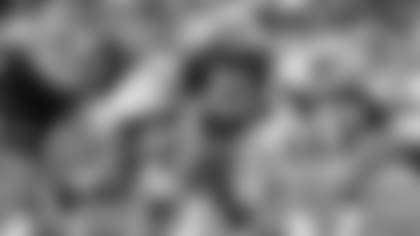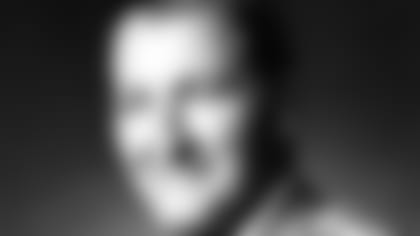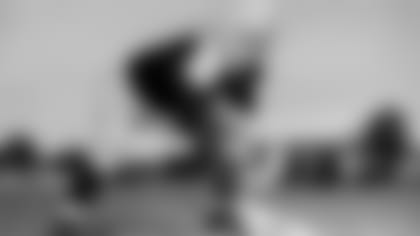Questions keep piling up in my inbox and I apologize that it sometimes takes weeks, or more, to answer them. Over the next few weeks, I'll try to make a dent in the list.
James from Lena, WI
Is it true that Archie Manning was the trade that never happened when John Hadl came here? I've heard New Orleans backed out of the trade and Dan Devine was desperate for a quarterback and acquired Hadl instead.
Good memory. Ditto for Jeff of Neenah who also asked about the Packers' pursuit of Manning. It happened in 1974, the week before the Hadl trade was consummated. Bill Tobin, who was the Packers' director of pro scouting at the time, actually had reached an agreement on a deal with New Orleans. The Packers were going to get Archie Manning, who was 25 years old and four years removed from being the No. 2 overall pick in the draft, for two first- and two second-round draft picks. Manning had a terrible game the week before against Denver – 12 completions in 27 attempts for 154 yards – and the Saints were set to start backup Bobby Scott in a game at Atlanta on Oct. 20, 1974. Tobin flew to Atlanta expecting to finalize the deal as soon as the game ended. To his bitter disappointment, Scott suffered a knee injury and a rookie, 15th-round draft pick Larry Cipa, replaced him. Cipa completed 1 of 7 passes and with Scott out for up to a month, the Saints reneged on the trade. Tobin received the news outside the Saints' locker room shortly after the game from their pro scout. "(Ernie) Hefferle comes out and says, 'Bill, we can not follow through on our agreement. We lost our quarterback,'" Tobin told me in 1997. "What was I going to do? 'You promised.' So I get on the plane and fly back to Green Bay." The next night, the Packers lost to the Chicago Bears, 10-9, at Soldier Field. Jerry Tagge started at quarterback and went 14 of 32 for 140 yards and couldn't generate a second-half touchdown despite starting drives at the Bears' 29-, 37- and 36-yard lines. The next day, Devine sent five draft picks – two No. 1s, two No. 2s and a No. 3 – to the Los Angeles Rams for Hadl, who was 34 and had lost his fastball. The Packers had been an eyewitness to that two weeks earlier when they beat the Rams, 17-6, and Hadl looked horrendous: 6 completions in 16 attempts for 59 yards. The next game, two days before the deal was completed, the Rams replaced Hadl with James Harris, who led them to a 37-14 victory over San Francisco.

Walter from Toms River, NJ
I've been a Packer fan since 1960 and then in my early twenties I had the Green Bay Press-Gazette delivered to my home in New Jersey and loved your articles back then. So I'm happy you're writing for the Packers website. My question: When the Packers traded for Hadl, who was the general manager that pulled the switch for such a terrible trade?
Dan Devine was in his final year as the Packers coach and general manager. In turn, 1974 was my first year covering the Packers' beat for the Press-Gazette and so I was just a novice. Thanks for being a longtime loyal reader, but I'll be honest, it took me a number of years to piece together the full story about the Hadl trade. Based on my interview with Tobin and others, here is what I believe happened after the Manning deal fell through. John North was head coach at New Orleans at the time and Chuck Knox was head coach of the Rams. They had worked together on Blanton Collier's staff at the University of Kentucky in 1961. It was through that grapevine that the Rams learned Devine was desperate to acquire a veteran quarterback before the trade deadline. But it wasn't Knox or Rams general manager Don Klosterman who initiated the talks. Rams owner Carroll Rosenbloom called Devine directly. Devine, from what I understand, then negotiated the deal without consulting Tobin, normally his trusted confidant in the personnel department. Nor did Devine inform the Packers' executive committee that he was working on the deal. In fact, it was finalized on the date of the NFL's trade deadline, but not until after it had passed. How that was allowed to happen is something we may never know other than that Rosenbloom and NFL Commissioner Pete Rozelle were extremely tight. Tobin, who later spent 18 seasons in player personnel with the Chicago Bears and also served as the Indianapolis Colts' director of football operations in the mid-1990s, told me nearly 20 years ago, "Now, we get memos every year that the trading deadline will never be extended, regardless of circumstances. But it was extended that year. Rosenbloom probably called Rozelle and said, 'We're working on a deal. Don't send out the wire yet.'" According to Tobin, it wasn't just minutes, but an hour or more after the deadline passed before the trade was finally completed.

William from Alexandria, VA
My father used to tell my brothers and me about his experiences as a young man when he was part of the Packer Band. According to dad, the band had regularly accompanied the team to Chicago for the Bear game on special trains. I think I remember the band still being active in the 1960s. Can you shed any light on this?
The Lumberjack Band was synonymous with the Packers into the early 1960s and continued to perform as the Green Bay Packer Band through 1996. Actually, the Tundra Line carries on the tradition today, but follows a different routine. Lynn of Los Alamos, N.M., and Scotty of Lombard, Ill., also asked about the band and its history. George De Lair, one of the Packers' early boosters and owner of a popular Green Bay restaurant, loosely organized the Lumberjacks in 1921. He put out a call for musicians before the Packers' first two trips to Chicago. In fact, if the truth be known, when the Packers played what are now the Chicago Bears for the first time, the band might have made a bigger hit in Chicago than the team. The primed-to-party musicians took a midnight train from Green

Bay to Chicago and then marched from the station through the Loop and out to the stadium. They dressed in lumberjack outfits – thus, the name – and played their instruments the entire way. "I will never forget it," Ernie Stiller, one of the band members, told George Whitney Calhoun almost 40 years later. "The ride to Chicago was a nightmare. Then came the parade from the station and the run-in with police, which was soon smoothed over. We marched into several of the Loop hotels and spread the Green Bay football gospel all around. When we arrived at Wrigley Field even the gate men were amazed to see an out-of-town band at a pro football game." The band continued to play and party at Packers games through 1938 with little structure other than that they were always sure to play "On Wisconsin" and "How Dry I Am." In 1939, the Packers' corporation took control of the band to have more say over its activities. A permanent bandstand had been built in the northwest corner of City Stadium two years earlier, new uniforms were purchased, and the plan called for the band to regularly play at halftime and other points during the game. While the band still relied on volunteers, it now had a regular roster. The band also had a greater presence, especially when the Packers were struggling in the 1950s. It was the featured entertainment at "send-off" and welcome-home rallies at the train depot when the Packers were playing on the road or in Milwaukee. It also played at other special events and marched in many local parades. Wilner Burke, who was inducted into the Packers Hall of Fame in 1986, was band director from 1939-81, although he shared the duties the first year with Alex Enna. UW-Green Bay music professor Lovell Ives followed him and oversaw the transformation of the band to one that now performs in small groups in the parking lots for tailgaters prior to the game.

Susan from King City, Ontario
My father was Jay Rhodemyre, who played from 1948-49, '51-52. In spite of the turmoil and losses, my father loved his time in Green Bay. How can I find out more about his time there?
In your father's first two years, he played in 21 of 24 games and started 14 at center. In his last two seasons, he started all 24 games at center. The rules on substitution changed in 1950, so in 1948 and '49, he played defense, as well. That would explain his five interceptions those two years. Players were much smaller then, but your dad was still an undersized center at 6-1, 210. Ed Neal, one of the Packers' other centers, outweighed him by at least 65 pounds. Perry Moss told me several years ago that in 1948 after your father became the first lineman ever named MVP of the College All-Star Game, the two of them drove together to training camp at Rockwood Lodge. Based on feedback from Ken Kranz, I believe your father played right outside linebacker on defense, at least in 1949. Joe Ethridge, another teammate in '49, told me your father was "a real hitter," which I'm sure he had to be to survive at his weight. One of your father's biggest plays was a fourth-quarter interception that helped save a 16-14 victory over Detroit in 1949. If you're wondering why he didn't play in 1950, he retired to go into business, but then rejoined the Packers in camp in Grand Rapids, Minn., in 1951.
Harmon from El Paso, TX
What player wore No. 47 for the Packers?
Rookie linebacker Jake Ryan wore it this past season. Previously, 20 players had worn it. You can find the list if you go to the History link on packers.com,**click Media Guide**and turn to page 562.
Ross from Rochester, MN
My dad was at the Ice Bowl and talked about the cold. People around here say Bart Starr's sneak was in the north end zone. My dad always said the south end zone. Please clarify.
Your dad was right. It was the south end zone. I'll let the readers comment about people in Minnesota not knowing that.
*Photos courtesy of Green Bay Packers Hall of Fame, Inc. archives.
*
For more of Cliff Christl's historical perspectives, click here.* *















